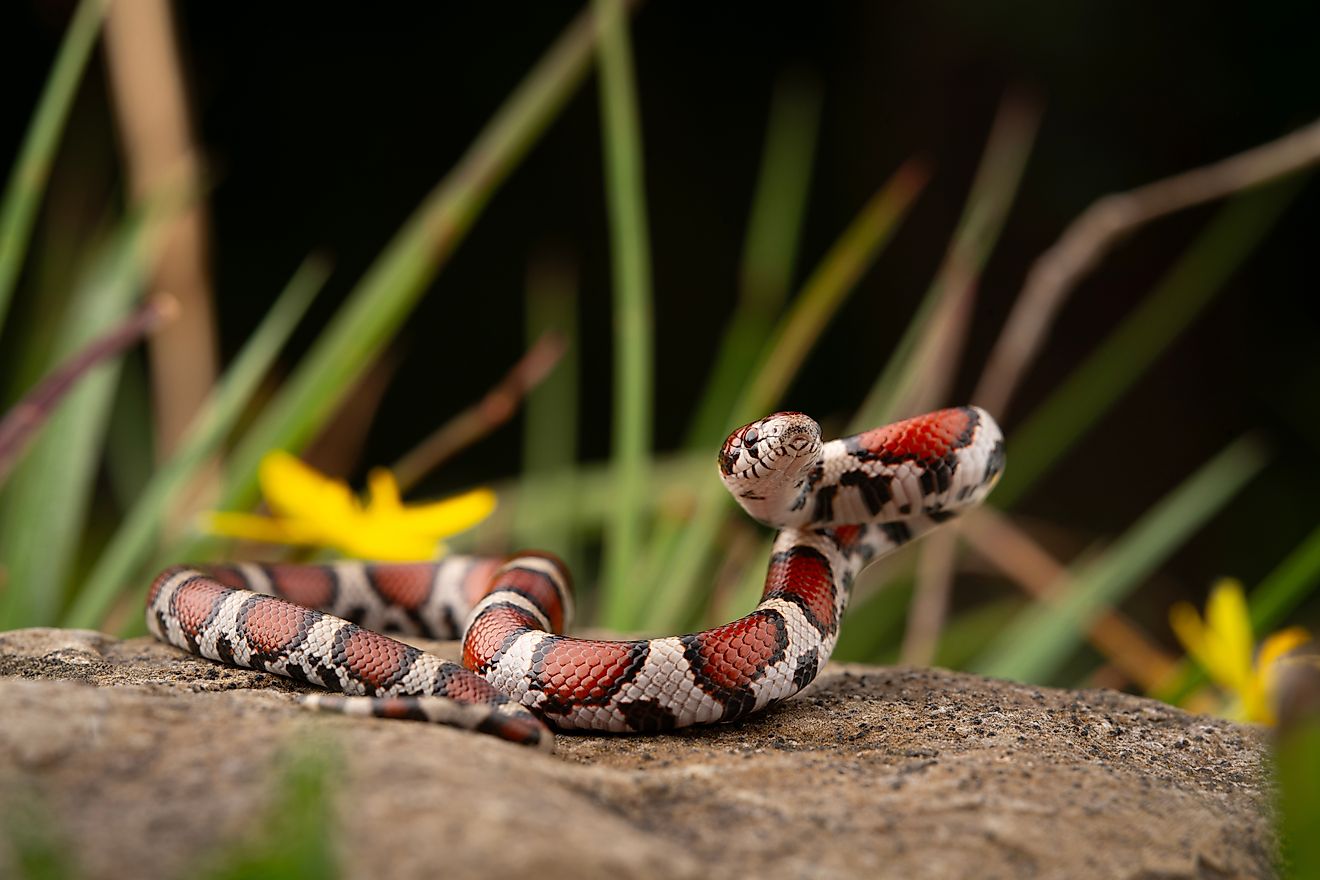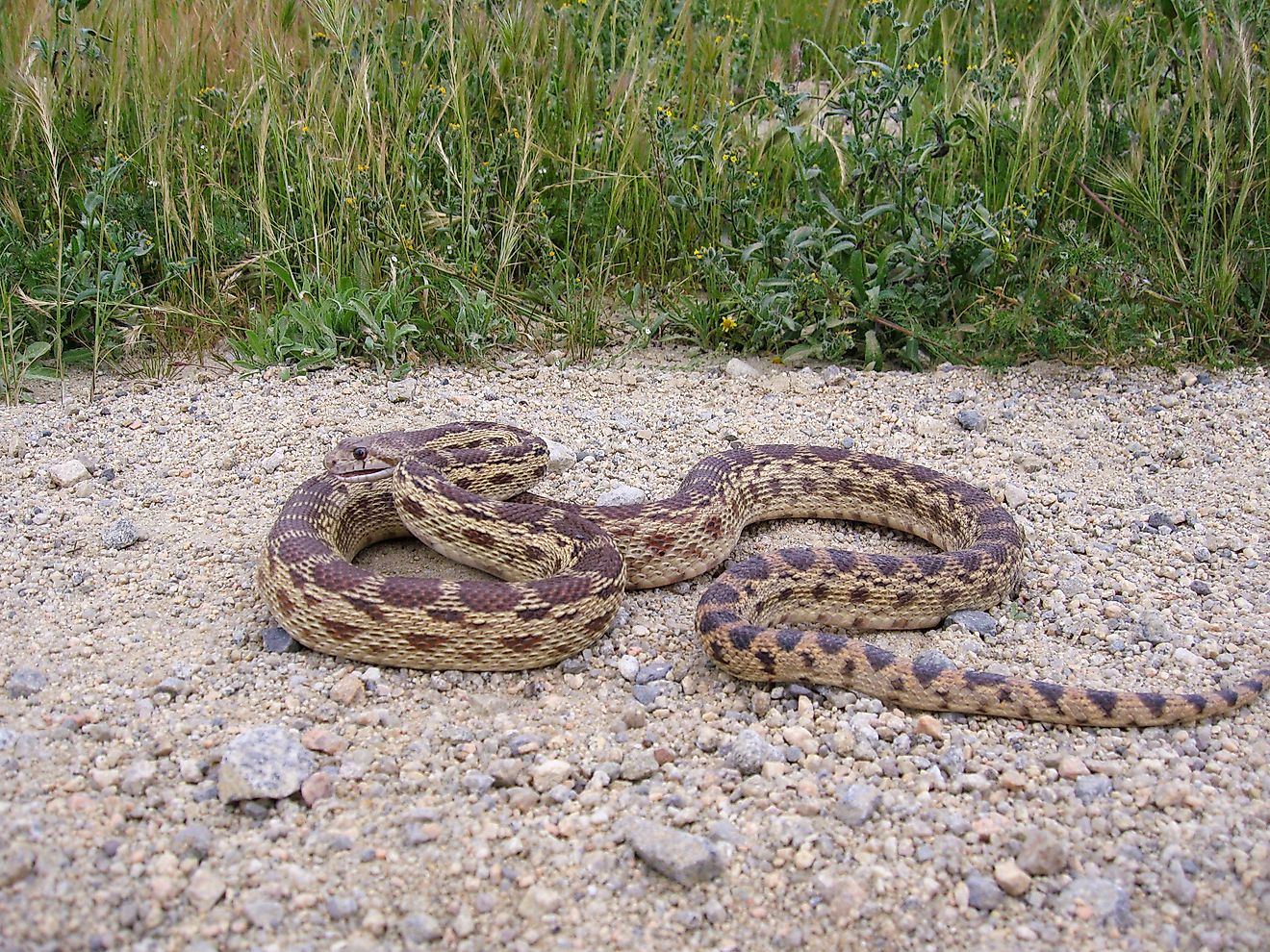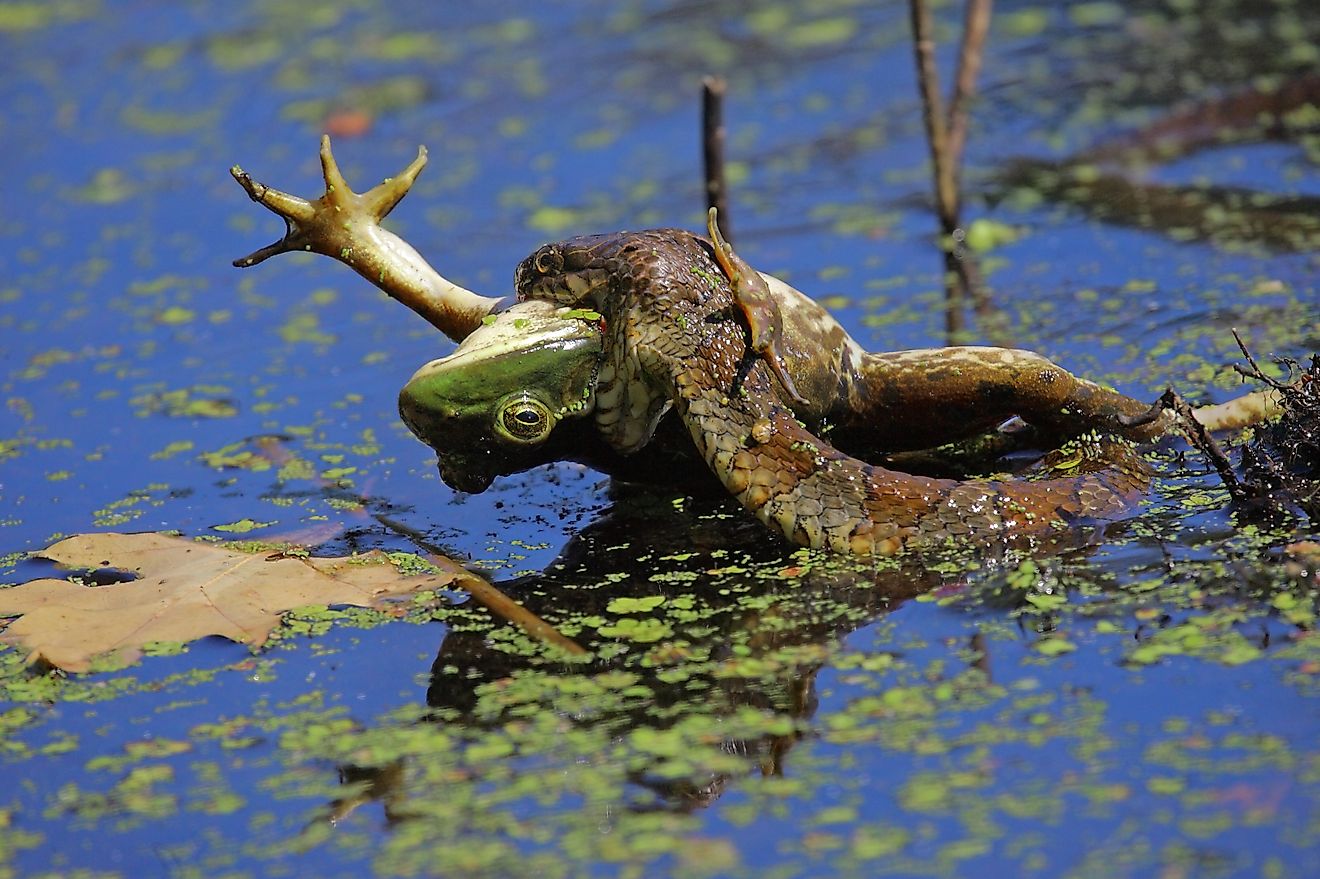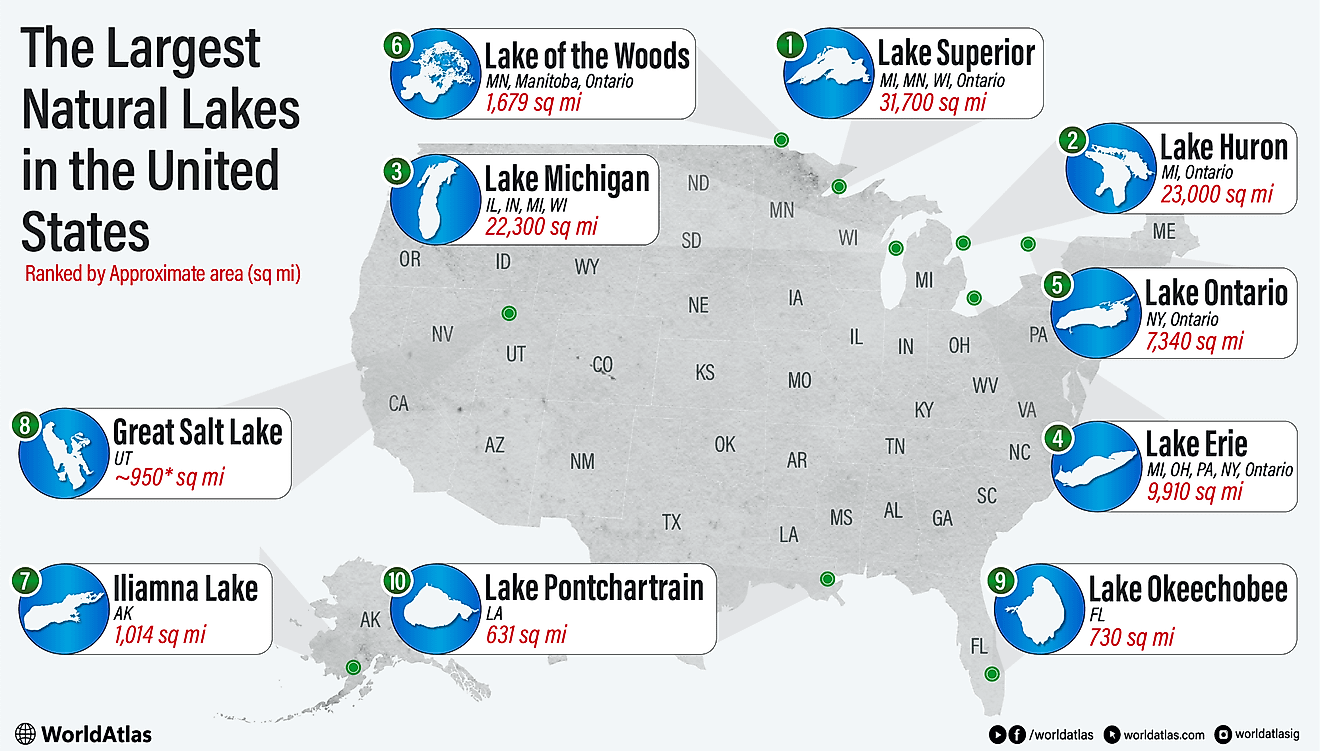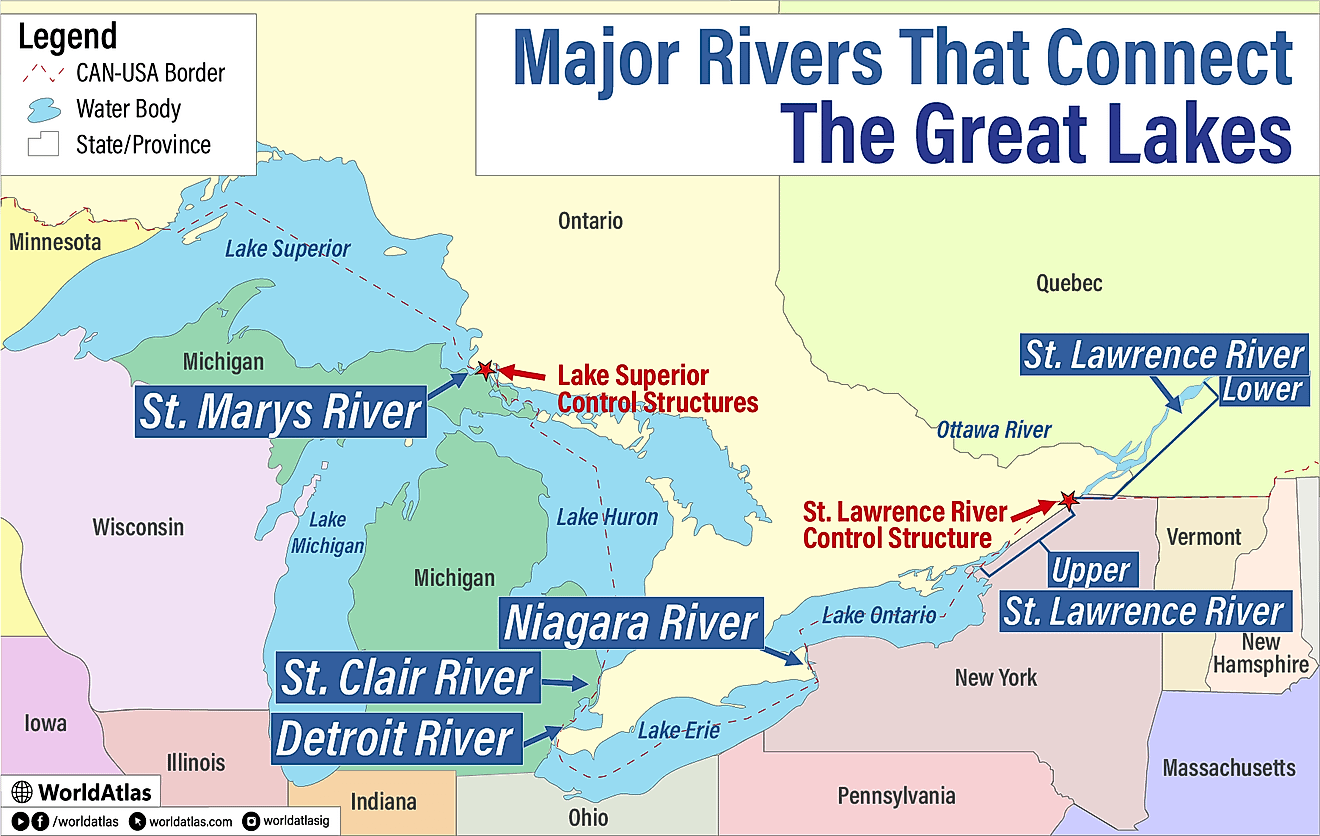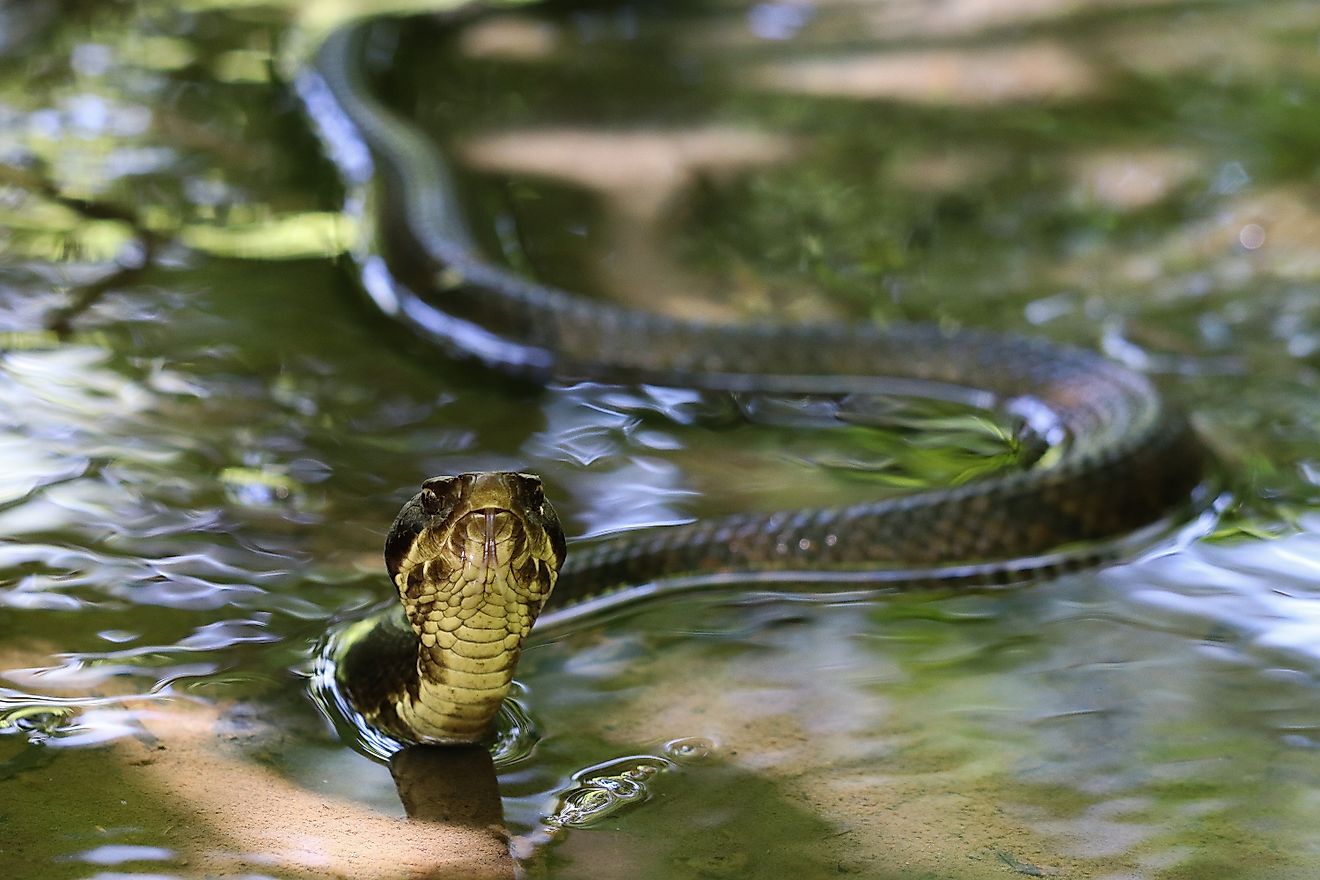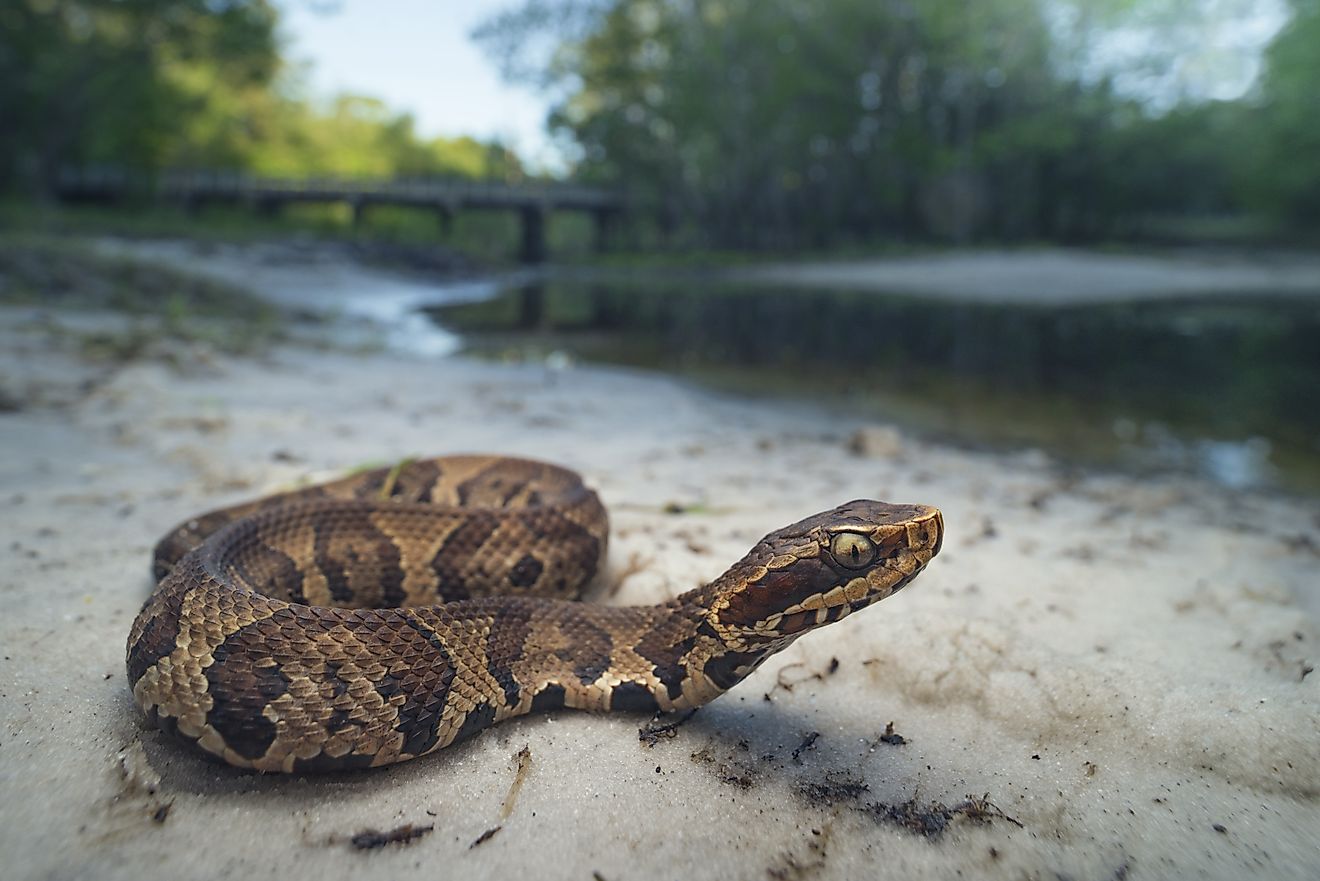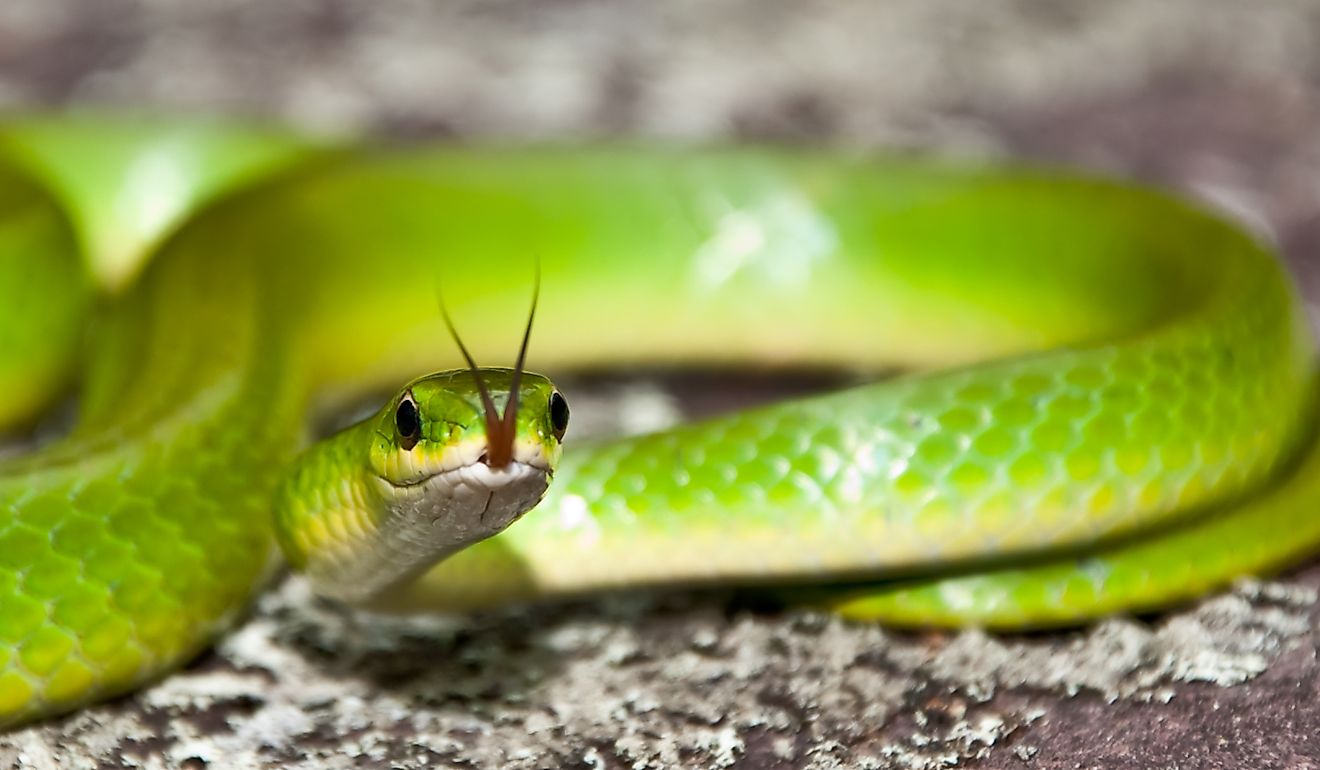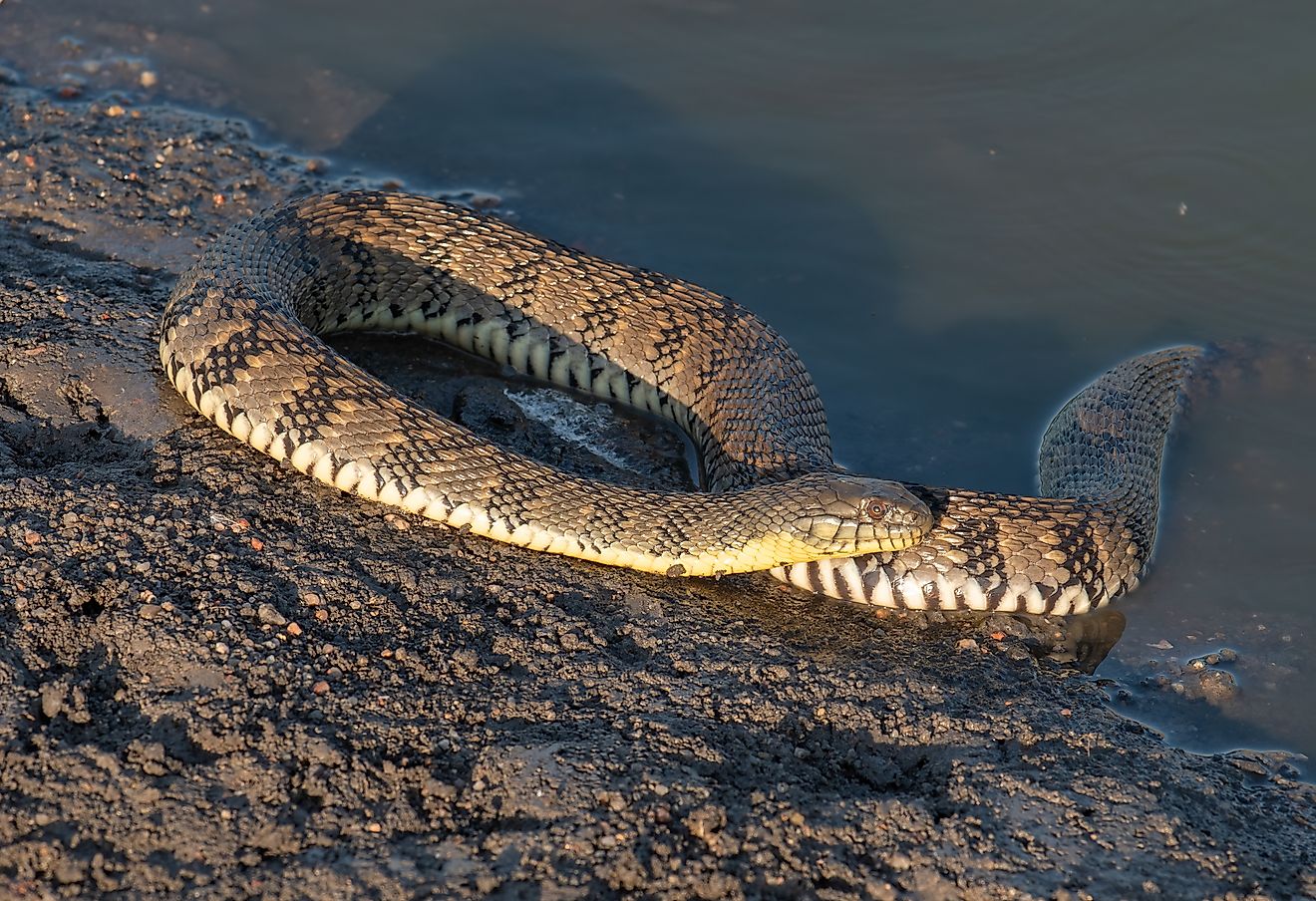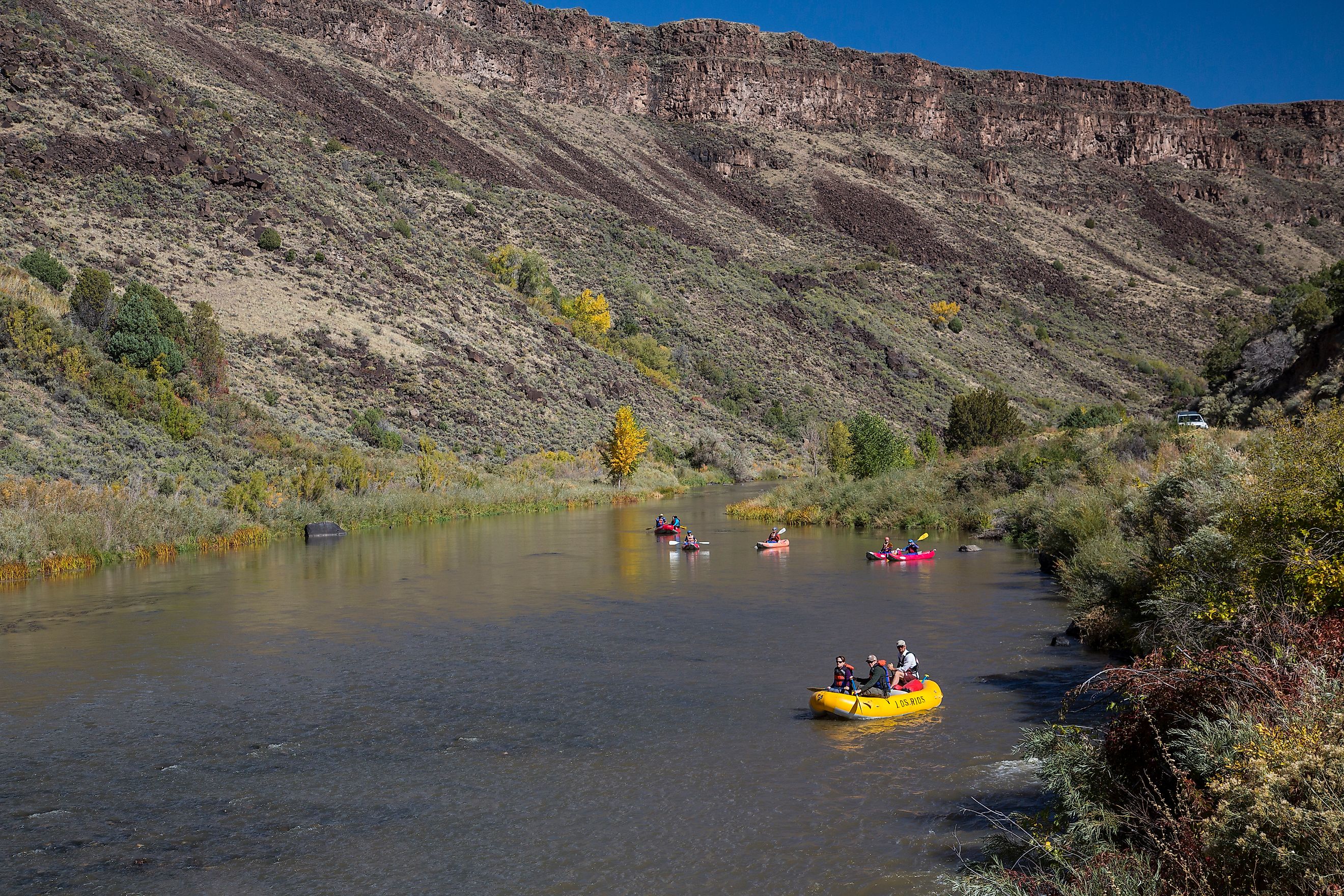
5 Most Snake-Filled Bodies Of Water In New Mexico
The popular tourist destination of New Mexico is often associated with cacti, mountains, rivers, and a stifling hot desert atmosphere. When you're surrounded by so much heat, taking a plunge in one of the local rivers or lakes might sound like an appealing solution to cool off. But before you take the plunge, you may want to consider what’s lurking underneath the rippling surface, as New Mexico is home to several different snake species.
The good news is that of the 46 species found in the state, only eight species are venomous; seven of these are rattlesnakes and one is a coral snake, with rattlesnakes being the more common of the two. Regardless, venomous or not, doing your research will help keep you safe from disturbing any slithering inhabitants during your vacation. Here are the five most snake-filled bodies of water in New Mexico.
Rio Grande
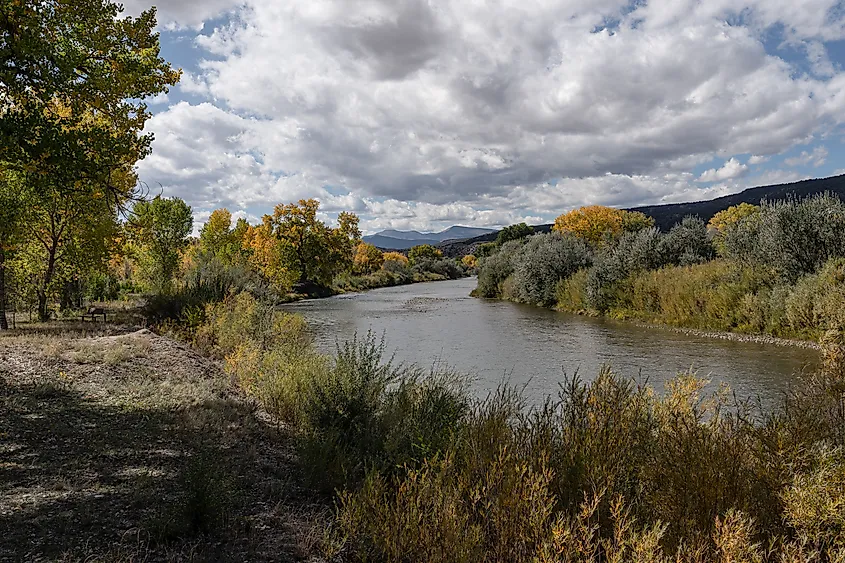
The Rio Grande is a river approximately 1,800 miles long that runs from the Colorado mountains through New Mexico. It flows along the border of Mexico and Texas and finally spills into the Gulf of Mexico. Along the Rio Grande runs the Bosque (Spanish for “woods”), a forest of cottonwoods that is estimated to be over one million years old. This forest provides the resources that many animals and plants rely on to survive in such a hot desert climate. More than 500 species of animals have made their homes in the Bosque, and several of those are snakes.
Due to the proximity of the Bosque to the Rio Grande, many snake species can be found swimming within the waters, both venomous and non-venomous. The Texas blind snake (Rena dulcis), great plains rat snake (Pantherophis emoryi), gulf coast ribbon snake (Thamnophis proximus), and the bullsnake (Pituophis catenifer) are all non-venomous snakes that can be found at the river and within the Bosque. Of those listed, all are generally docile. However, the bullsnake is known for defensive behavior such as loud hissing, puffing themselves up, and even vibrating their tails in an attempt to appear like a rattlesnake. The bullsnake also has stronger jaws than the others, which means a bite would be slightly more painful.
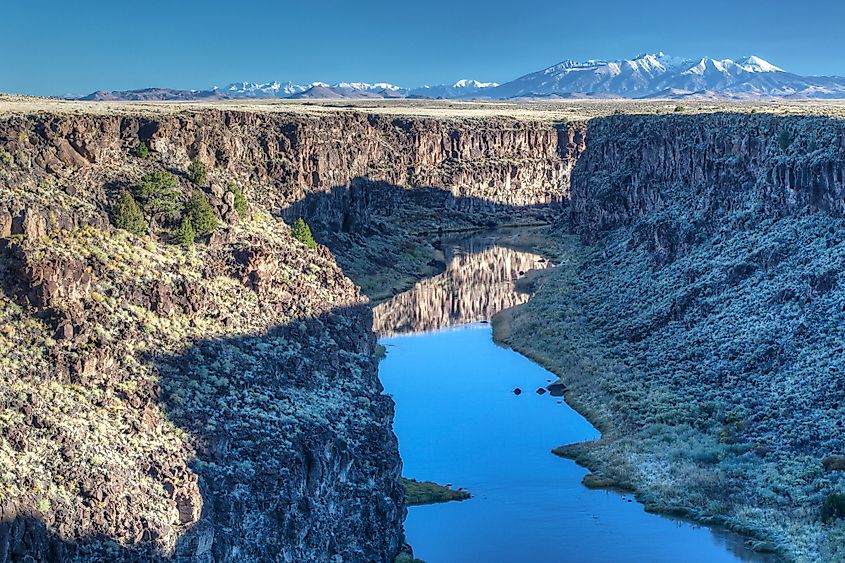
Both the western diamond-backed rattlesnake (Crotalus atrox) and the Texas coral snake (Micrurus tener) can also be found here, and both of these are venomous. The western diamond-backed rattlesnake is considered to be the higher risk of the two, as it is both more common and more defensive. The Texas coral snake, on the other hand, is generally not aggressive and more likely to flee than bite. It also has much smaller fangs that don't inject venom as deeply, while it has to chew the victim in order to inject its venom properly. Although both snakes have different venom types with varying effects (a venom that causes tissue damage versus a venom that attacks the nervous system), a bite from either will require immediate medical attention.
Elephant Butte Lake
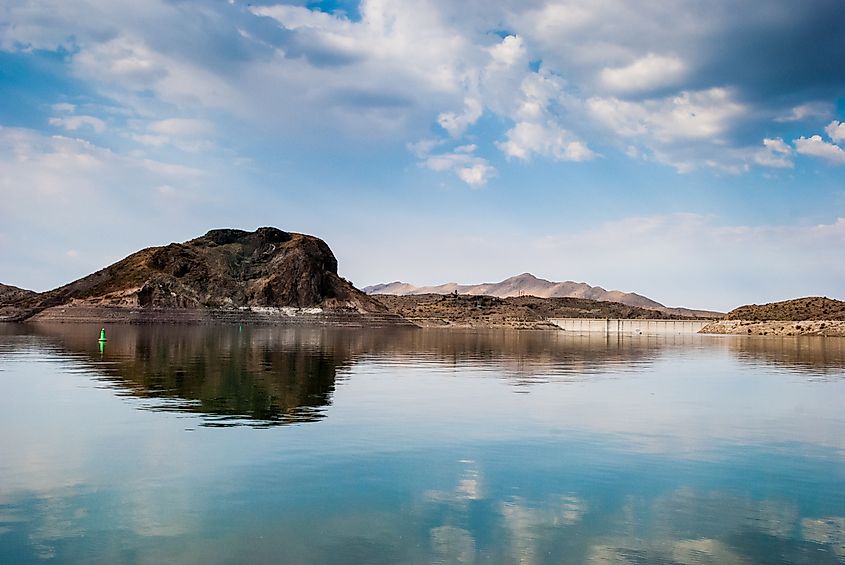
Sitting in Southern New Mexico, Elephant Butte Lake is a popular tourist destination and relaxing getaway for locals, especially during the summer months. The location of the lake itself is considered remote, as the nearest major city, Juarez, is approximately 108 miles away. Known as the largest lake in New Mexico, it was initially formed in 1916 when the Elephant Butte Dam was built on the Rio Grande in an attempt to improve irrigation and flood control. The lake is a popular destination for fishing, boating, and water skiing, and its proximity to Elephant Lake State Park also makes it a popular camping spot. Unfortunately, the warm weather and prey animals also make it a magnet for snakes.
While most snakes that are found here are not harmful or venomous, such as the checkered garter snake (Thamnophis marcianus), the striped whipsnake (Masticophis taeniatus), and the ground snake (Sonora semiannulata), there are some venomous snakes to be careful of in this area. Several different types of rattlesnakes can be found here, including the eastern black-tailed rattlesnake (Crotalus molossus) and the western diamond-backed rattlesnake (Crotalus atrox). Of the two, the western diamond-backed rattlesnake is the more defensive and is quicker to strike if it feels threatened. Typically, rattlesnakes rattle their tails as a warning, so it is advisable to keep your ears open and your steps cautious while in the area.
Cochiti Lake
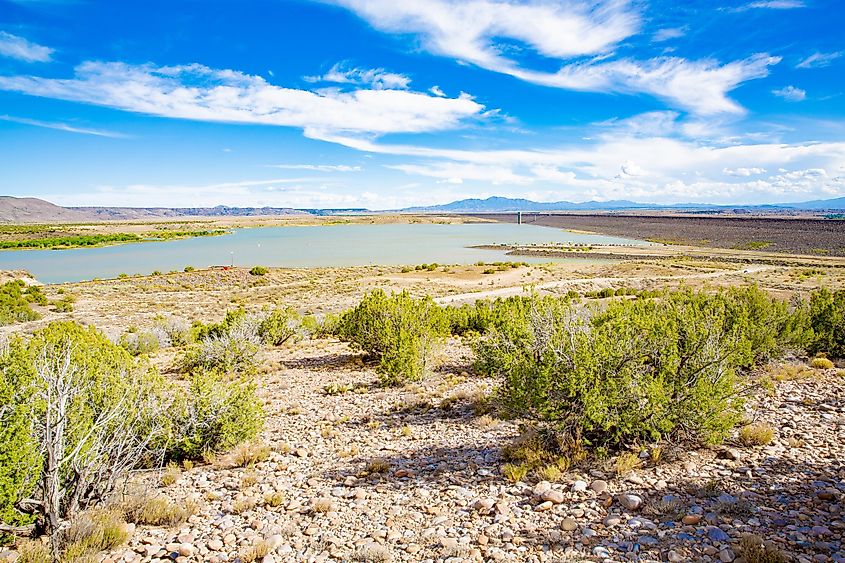
Cochiti Lake is another man-made reservoir, created in 1975 when the Cochiti Dam was built, and is managed by the US Army Corps of Engineers. The lake features a campground with access to water and electricity, located just a short drive away, and offers beautiful views of the Jemez Mountains in the background. It’s located on the Pueblo de Cochiti reservation, an Indian reservation, and sits approximately 30 miles from Albuquerque and 50 miles from Santa Fe. The reserve itself is a 50,000-acre reservation, meaning most of it remains consistently undisturbed. These quiet areas, combined with the reliable water source of Cochiti Lake, make it a refuge for snakes.
Here again, the western diamond-backed rattlesnake (Crotalus atrox) has been known to haunt, so you will want to listen carefully for any rattling while visiting. Several other non-venomous snakes can also be found in the area, such as the western garter snake (Thamnophis elegans), bullsnake (Pituophis catenifer), and coachwhip (Masticophis flagellum). Snakes are cold-blooded, which means they seek out warm temperatures. Rocky areas often attract snakes as spots to bask in the sunlight, especially since the rocks absorb the sun's heat and become warm to lie on. This means that the several open rocky areas throughout the reserve are highly attractive spots for snakes to sunbathe.
Meanwhile, grassy areas with shrubs and trees, as well as the lake itself, are often used as hunting grounds for prey, as cover, or as spots to cool down from the blazing sun. And remember: all snakes know how to swim, not just water snakes. This means you will need to keep an eye out while swimming as well.
Conchas Lake
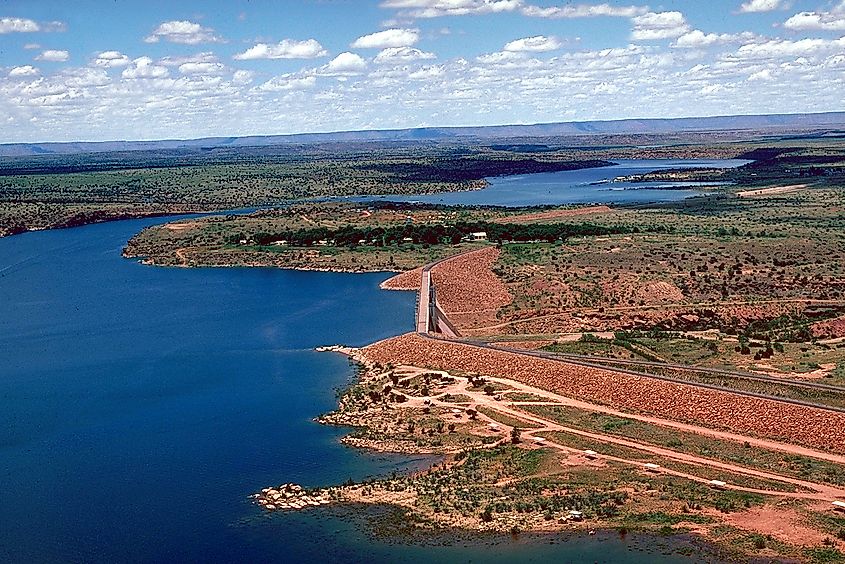
Built by the US Army Corps of Engineers, Conchas Lake was created in 1939 for flood control and irrigation purposes. At about 30 miles from the closed large town of Tucumcari, the lake is surrounded by farmers and privately owned cattle ranches. There are three separate recreation areas surrounding the lake, offering a total of 200 campsites for visitors to choose from. A 9-hole golf course is also located on the property, making the site a unique tourist attraction, known as Conchas Dam Golf Course. An additional unique feature of the lake is that several ancient petroglyphs and marine fossils have been discovered on some of the rocks and inlets of the lake.
Some of the snakes known to be found in this area include the prairie rattlesnake (Crotalus viridis),western diamond-backed rattlesnake, bullsnakes, coachwhips, and gopher snakes. Both species of rattlesnakes mentioned are venomous, with the western diamond-backed rattlesnake being the most aggressive of the two. Care should be taken when walking on the shoreline and in the surrounding grassy spots, as snakes are known to hunt in these areas. There have also been several sightings of snakes swimming through the lake, so take care when swimming or boating.
Sandia Lakes
Sandia Lakes Recreation Area currently features three separate lakes on the property, which are part of the Rio Grande Bosque ecosystem, located in Sandia Pueblo. Sitting at a distance of only about eight miles from the city of Albuquerque, it was initially built in the 1980s and has operated as a local fishery since then, with a combined surface area of the lakes totaling approximately 19 acres. It’s consistently stocked with fish for anglers, such as rainbow trout in the Winter and Summer, and channel catfish in the Spring and Fall months. The abundant vegetation that grows on the shores offers an attractive source of food, which, when combined with the nearby water sources, has attracted a variety of wildlife species, including geese, ducks, quails, and, of course, snakes.
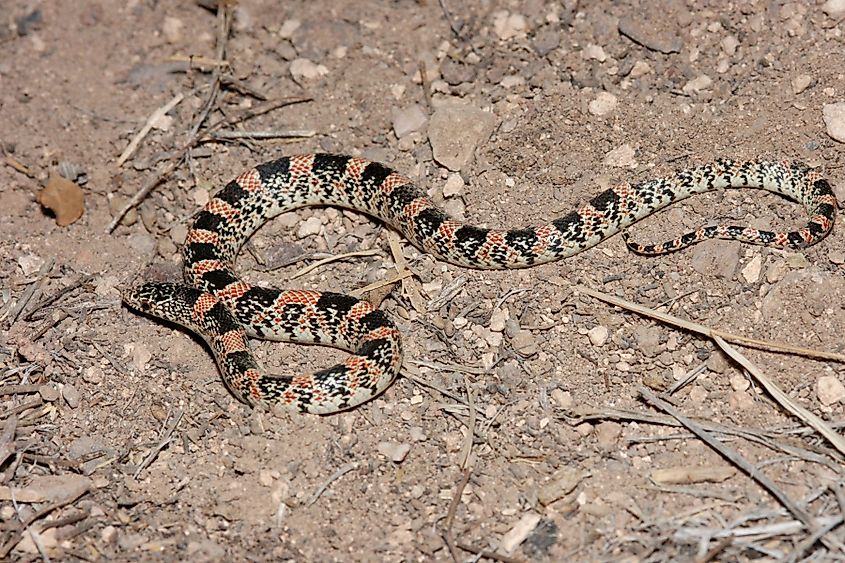
Some species that can be found here include striped whipsnake (Masticophis taeniatus), New Mexico garter snake (Thamnophis sirtalis dorsalis), glossy snake (Arizona elegans), and long-nosed snake (Rhinocheilus lecontei). All listed are non-venomous snakes, and generally docile, though the striped whipsnake is known for its quick movements and defensive behavior if cornered. Similar to the other locations, rattlesnakes are often seen in the area, such as the western diamond-backed rattlesnake (Crotalus atrox) and the northern black-tailed rattlesnake (Crotalus molossus molossus).
